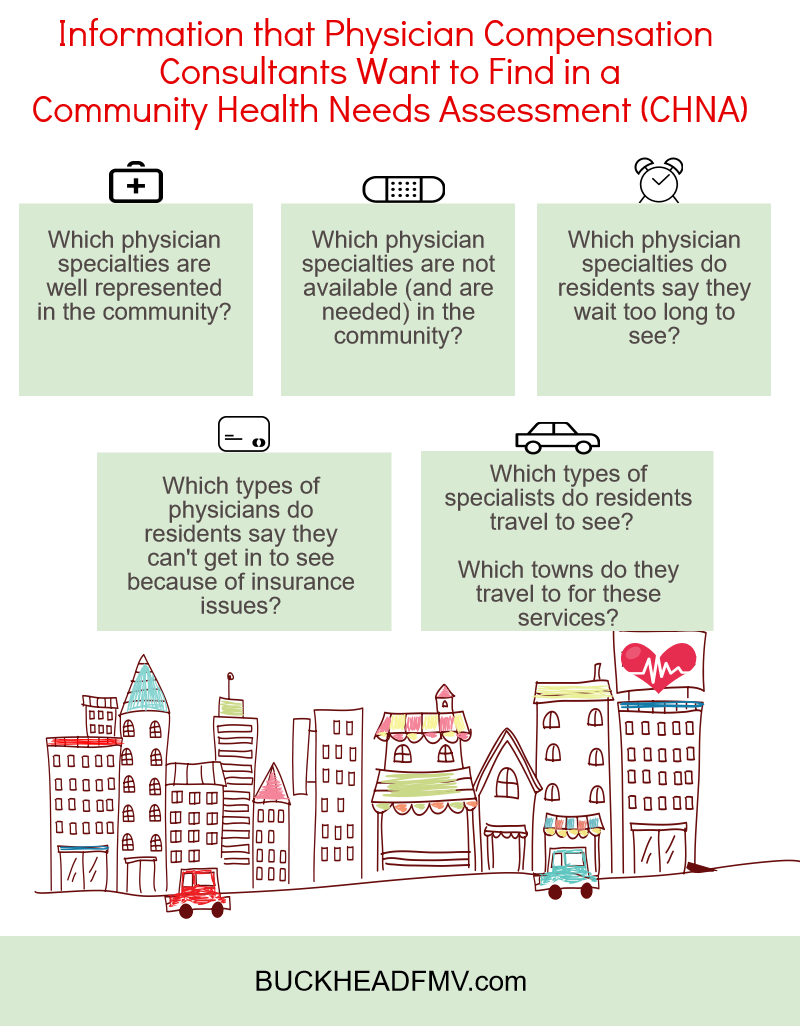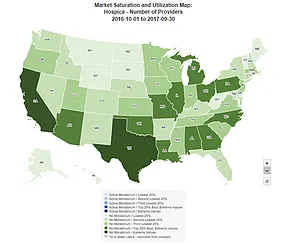Hospitals...Consider Asking these Physician-Related Questions During Your Next Community Health Need
Darcy Devine • May 27, 2016
We are in the middle of CHNA season - the time that comes every three years when a large number of not-for-profit hospitals conduct and publish their Community Health Needs Assessments. (The Affordable Care Act added the CHNA requirement to the Internal Revenue Code
in 2012, and many of the first CHNAs were published in 2013.)
As I read through the new CHNAs being posted to hospital websites around the country, I notice that some, but not all, discuss their community's physician situation in any detail. This is surprising because we constantly hear about the shortages of physicians and the high demand for physician services. It is also surprising because so many hospitals have difficulty recruiting physicians, and often have to pay very competitively to attract physicians to their communities.
One of the few stipulations
that the IRS makes about the contents of a CHNA is that it must take into account input from community members and persons who serve the community. As a physician compensation consultant, it would be helpful to know what these people perceive the physician needs to be in their communities. This type of information can be helpful to us when we try to determine whether the compensation a hospital is paying to a physician is fair market value and commercially reasonable.
There is a lot of ground to cover in a CHNA, and the entire document cannot be focused on physician deficits. However, I have put together a short wish list of physician-related questions that I, and I'm sure others in similar roles, want to find when we read a hospital's CHNA report (see the infographic below). www.buckheadfmv.com

CON Laws, Scope of Practice Restrictions, and Provider Non-Compete Clauses Targeted in New Trump Adm
On Monday, December 3, 2018, the Department of Health and Human Services (HHS) – in collaboration with the Departments of the Treasury and Labor, the Federal Trade Commission, and several offices within the White House – released a report detailing recommendations for improving choice and competition in the healthcare industry.












